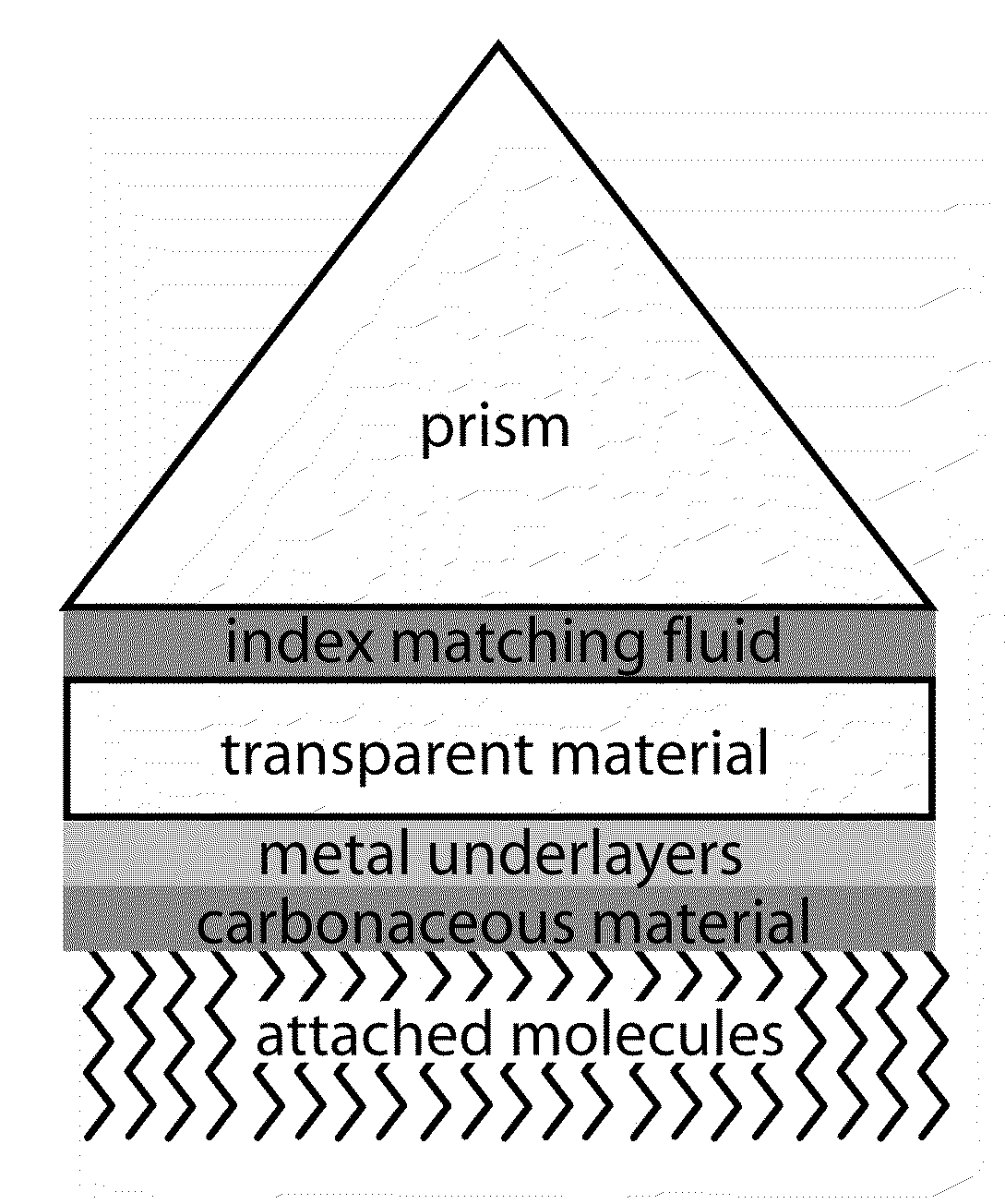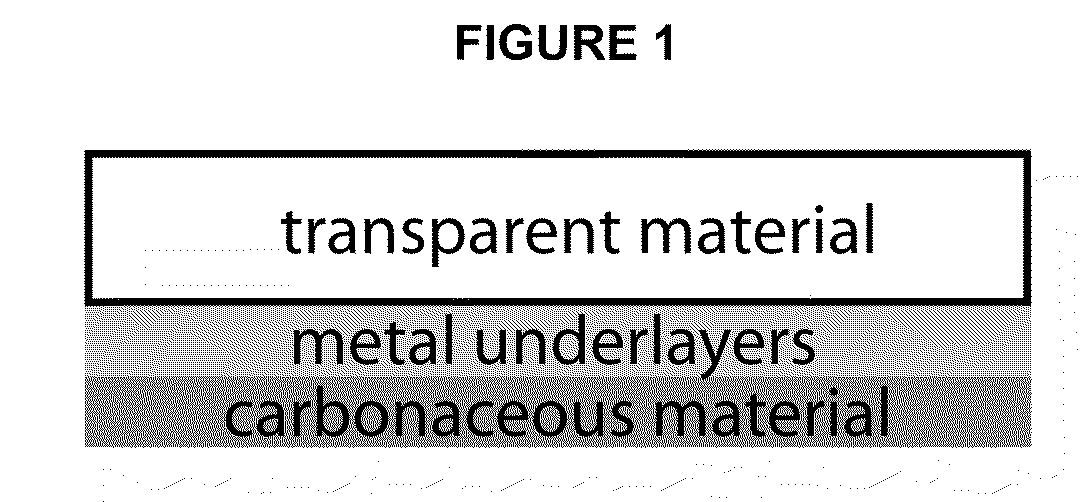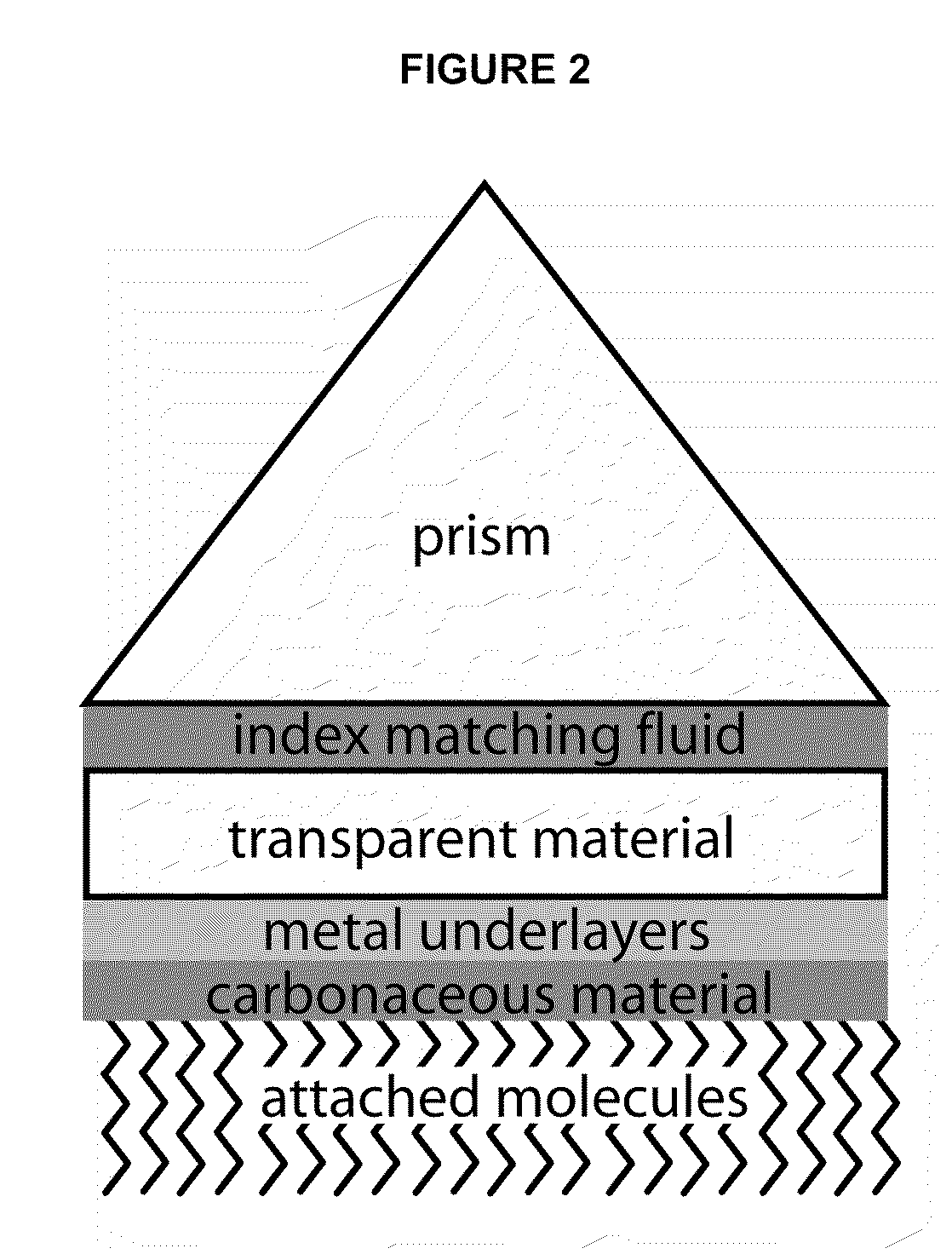Surface plasmon resonance compatible carbon thin films
a technology of surface plasmon and carbon thin film, which is applied in the field of surface plasmon resonance compatibility carbon thin film, can solve the problems of limited application of technology to the analysis of already known technologies, inability to provide much information on the nature of binding molecules, and inability to achieve high refraction index
- Summary
- Abstract
- Description
- Claims
- Application Information
AI Technical Summary
Benefits of technology
Problems solved by technology
Method used
Image
Examples
examples
[0087]It is to be understood that this invention is not limited to the particular methodology, protocols, subjects, or reagents described, and as such may vary. It is also to be understood that the terminology used herein is for the purpose of describing particular embodiments only, and is not intended to limit the scope of the present invention, which is limited only by the claims.
[0088]The following examples are offered to illustrate, but not to limit the claimed invention.
[0089]All reagents were purchased from Sigma Aldrich (St. Louis, Mo.) and used without further purification unless otherwise stated.
[0090]Silanization of Glass Slides
[0091]A 0.1% acetic acid in 95% ethanol stock solution was prepared. Arraylt SMC Superclean glass slides (Telechem International, Inc., Sunnyvale, Calif.) were stirred in 2% (v / v) N-(3-triethoxysilylpropyl)-4-hydroxy-butyramide (Gelest, Inc., Morrisville, Pa.) in stock solution for 4 hr at room temperature (RT). The slides were then rinsed by stirri...
PUM
| Property | Measurement | Unit |
|---|---|---|
| Thickness | aaaaa | aaaaa |
| Thickness | aaaaa | aaaaa |
| Thickness | aaaaa | aaaaa |
Abstract
Description
Claims
Application Information
 Login to View More
Login to View More - R&D
- Intellectual Property
- Life Sciences
- Materials
- Tech Scout
- Unparalleled Data Quality
- Higher Quality Content
- 60% Fewer Hallucinations
Browse by: Latest US Patents, China's latest patents, Technical Efficacy Thesaurus, Application Domain, Technology Topic, Popular Technical Reports.
© 2025 PatSnap. All rights reserved.Legal|Privacy policy|Modern Slavery Act Transparency Statement|Sitemap|About US| Contact US: help@patsnap.com



